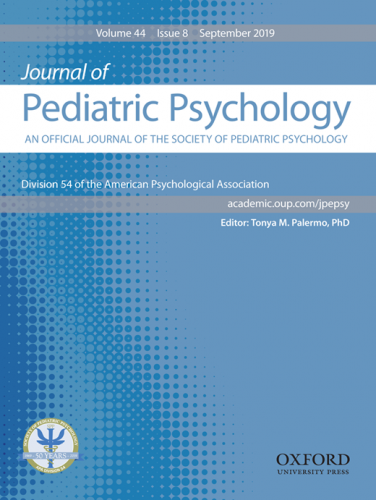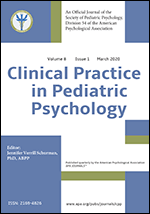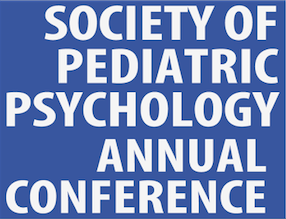Assessment Resource Sheet : Family Measures
Family measures include assessment tools spanning observational and self-report methods and fall into three broad assessment categories: family functioning, dyadic family relationships, and family functioning in the context of childhood chronic health conditions. This list of evidence-based measures was originally published in the Journal of Pediatric Psychology (Alderfer et al., 2008). All measures are classified as well-established, approaching well-established, or promising based upon criteria specified in that publication. Many measures deemed ''well-established'' in the general population to assess families are proving to be reliable and useful in pediatric samples. More evidence of the validity of family measures is needed in pediatric populations. Central references are cited with superscripts within the tables and immediate follow each table. Most measures can be obtained by contacting the authors of the source paper; website addresses are provided in brackets where available. The general age range of respondents is included in parentheses. For greater detail, please see the Supplemental Tables associated with the original publication.
Family Functioning
|
Assessments |
Well-established |
Approaching |
Promising |
|
Observational Coding Systems |
|||
|
Beavers Interactional Scales (BIS):1 |
X | ||
|
Circumplex Clinical Rating Scale (CCRS)3 (families of children of any age) |
X | ||
|
The System for Coding Interactions and Family Functioning (SCIFF)2 (families of children aged 5 to 12) |
X | ||
|
McMaster Clinical Rating Scale (MCRS)4, 5 (families of infants through adolescents) |
X | ||
|
Mealtime Interaction Coding System (MICS)6 (families of 1-6 year olds) |
X | ||
|
Iowa Family Interaction Rating Scales (IFIRS)7, 8 (families of children aged 2 to young adulthood) |
X | ||
|
Circumplex Clinical Rating Scale (CCRS)3 (families of children of any age) |
X | ||
|
McMaster Clinical Rating Scale (MCRS)4, 5 (families of infants through adolescents) |
X | ||
|
Self Report Questionnaires |
|||
|
Family Assessment Device (FAD)4, 9 (self-report by ages 12+; 7-12 with modification) |
X | ||
|
The Family Assessment Measure (FAM-III)11 (self report by ages 10+) |
|||
|
Family Relationship Index of the Family Environment Scale (FRI)14(self report by ages 11+) |
X | ||
|
Beavers Self-Report Family Inventory (SFI)10 (self-report by ages 11+) |
X | ||
|
The Family Environment Scale 3rd Edition (FES)12, 13 (self report by ages 11+) |
X | ||
|
Kronenberger & Thompson Factor-analytic Component Scoring, Family Environment Scale15 (self report by ages 11+) |
X | ||
|
Family Inventories Package:16 Family Adaptability and Cohesion Evaluation Scale IV (FACES-IV); Family Communication Scale; Family Satisfaction Scale (self-report by ages 12+) |
X | ||
Dyadic Family Relationships
|
Assessments |
Well-established |
Approaching |
Promising |
|
Martial or Partner Relationships |
|||
|
Locke-Wallace Marital Adjustment Test (MAT)17, 18 (parent report) |
X | ||
|
Dyadic Adjustment Scale (DAS)19 (parent report) |
X | ||
|
Marital Satisfaction Inventory-Revised (MSI-R)20 (parent report) |
X | ||
|
Parent-Child Relationships (Parenting) |
|||
|
Revised Child Report of Parental Behavior Inventory (CRPBI-30)21 (self report by ages 8+) |
X | ||
|
Inventory of Parent and Peer Attachment (IPPA)22 (designed with ages 16-21; self-reports by ages 6+) |
X | ||
|
Issues Checklist (IC)23 (families of 11 to 17 year olds; self report by ages 11+) |
X | ||
|
Constraining and Enabling Coding System (CECS)24 (families of 11-19 year olds) |
X | ||
|
Sibling Relationships |
|||
|
Sibling Relationship Questionnaire (SRQ)25 (self report by 8-18 year olds) |
X | ||
Family Functioning in the Context of Childhood Chronic Medical Conditions
|
Assessments |
Well-established |
Approaching |
Promising |
|
Normative Family Processes |
|||
|
Autonomy & Intimacy Rating System (AIRS)26 (families of children aged 11-19) |
X | ||
|
Impact of Medical Condition on Family |
|||
|
Impact on Family Scale (IOF)27 (parent report) |
X | ||
|
Parents of Children with Disabilities Inventory (PCDI)28 (parent report) |
X | ||
|
Pediatric Inventory for Parents (PIP)29 (parent report) |
X | ||
|
Family Coping with Medical Condition |
|||
|
Coping Health Inventory for Parents (CHIP)30 (parent report) |
X | ||
|
Family Coping Coding System (FCCS)31 (families with children of any age) |
X | ||
|
Family Narrative Consortium Coding System32 (families with children of any age) |
X | ||
1. Beavers, R.W. & Hampson, R.B. (2003). Measuring family competence: The Beavers systems model. In F. Walsh (Ed) Normal Family Processes, 3rd edition (pp 549-580). New York, NY. Guilford Press.
2. Lindahl, K.M., & Malik, N.M. (2001). The System for Coding Interactions and Family Functioning. In P. Kerig and K. M. Lindahl (Eds.), Family Observational Coding Systems (pp. 77-91). Mahwah, NJ: Erlbaum.
3. Olson, D.H. (1990). Family Circumplex Model: Theory, assessment and intervention. Japanese Journal of Family Psychology, 4, 55-64
4. Epstein, N.B., Bishop, D.S., & Baldwin, L.M (1982). McMaster Model of Family Functioning: A view of the normal family. In F. Walsh (Ed.), Normal Family Processes (pp 115-141). New York, NY. Guilford Press.
5. Miller, I., Kabacoff, R., Epstein, N. Bishop, D., Keitner, G., Baldwin, L., & van der Spuy, H. (1994). The development of a clinical rating scale for the McMaster Model of Family Functioning. Family Process, 33, 53 -69.
6. Dickstein, S., Hayden, L.C., Schiller, M., Seifer, R., & San Antonio, W. (1994) Providence Family Study mealtime family interaction coding system. Adapted from the McMaster Clinical Rating Scale. East Providence, RI: E. P. Bradley Hospital.
7. Melby, J.N. & Conger, R.D. (2001). The Iowa Family Interaction Rating Scales: Instrument summary. In P. Kerig and K. M. Lindahl (Eds.), Family Observational Coding Systems (pp. 33-58). Mahwah, NJ: Erlbaum.
8. Melby, J.N., Conger, R.D., Book, R., Rueter, M., Lucy, L., Repinski, D. et al. (1998.) The Iowa Family Interaction Rating scales (5th ed) Unpublished manuscript, Institute for Social & Behavioral Research, Iowa State University, Ames.
9. Bihun, J.T., Wamboldt, M.Z., Gavin, L.A., & Wambolt, F.S. (2002). Can the family assessment device (FAD) be used with school age children? Family Process, 41, 723-731.
10. Beavers, R.W., & Hampson, R.B. (1990). Successful families: Assessment and intervention. New York: Norton.
11. Skinner, H., Steinhauer, P., & Sitarenios, G. (2000). Family Assessment Measure (FAM) and process model of family functioning. Journal of Family Therapy, 22, 190–210.
12. Moos, R., & Moos, B. (1994). Family Environment Scale (3rd ed.). Palo Alto, CA: Consulting Psychologists Press.
13. Oliver, J.M., May, M.J., & Handal, P.J. (1988). The factor structure of the Family Environmental Scale: Factors derived from subscales. Journal of Clinical Psychology, 44, 723-727.
14. Holahan, C.J., & Moos, R.H. (1983). The quality of social support: Measures of family and work relationships. British Journal of Clinical Psychology, 22, 157-162.
15. Kronenberger, W.G. & Thompson, R.J. (1990). Dimensions of family functioning in families with chronically ill children: A higher order factor analysis of the family environment scale. Journal of Clinical Child Psychology, 19, 380-388.
16. Olson, D.H. & Gorall, D.M. (2006). FACES IV & the Circumplex Model. Unpublished manuscript, Life Innovations, Inc., www.facesiv.com/pdf/3.innovations.pdf
17. Locke, H., & Wallace, K. (1959). Short marital adjustment and prediction tests: Their reliability and validity. Marriage and Family Living, 21, 251-255.
18. Freeston, M.H. & Plechaty, M. (1997). Reconsiderations of the Locke Wallace Marital Adjustment Test: Is it still relevant for the 1990's. Psychological Reports, 81, 419-434.
19. Spanier, G.B. (1976). Measuring dyadic adjustment: New scales for assessing the quality of marriage and similar dyads. Journal of Marriage & the Family, 38, 15-28.
20. Snyder, D.K. (1997). Manual for the Marital Satisfaction Inventory - Revised. Los Angeles: Western Psychological Services.
21. Schludermann, S., & Schludermann, E. (1988). Questionnaire for children and youth (CRPBI-30). Unpublished manuscript, University of Manitoba, Winnipeg
22. Armsden, G.C., & Greenberg, M.T. (1987). The inventory of parent and peer attachment: Individual differences and their relationship to psychological well being in adolescence. Journal of Youth and Adolescence, 16, 427-454
23. Robin, A.L., & Foster, S.L. (1989). Negotiating parent-adolescent conflict: A behavioral-family systems approach. New York: The Guilford Press.
24. Hauser, S.T., Powers, S.I., Noam, G.G., Jacobson, A.M., Weiss, B., & Follansbee, D.J. (1984). Familial contexts of adolescent ego development. Child Development, 55, 195-213.
25. Furman, W., & Buhrmester, D. (1985). Children's perceptions of the personal relationships in their social networks. Developmental Psychology, 2, 1016-1024.
26. Maharaj, S., Rodin, G., Connolly, J., Olmsted, M., & Daneman, D. (2001). Eating problems and the observed quality of mother-daughter interactions among girls with type 1 diabetes. Journal of Consulting & Clinical Psychology, 69, 950-958.
27. Stein, R.E.K., & Jessop, D.J. (2003). The Impact on Family Scale revisited: Further psychometric data. Journal of Developmental & Behavioral Pediatrics, 24, 9-16.
28. Noojin, A.B., & Wallander, J.L. (1996). Development and evaluation of a measure of concerns related to raising a child with a physical disability. Journal of Pediatric Psychology, 21, 483-498.
29. Streisand, R. Braniecki, S. Tercyak, K.P., & Kazak, A.E. (2001). Childhood illness-related parenting stress: The Pediatric Inventory for Parents. Journal of Pediatric Psychology, 26, 155-162.
30. McCubbin, H.I., McCubbin, M.A., Patterson, J.M., Cauble, A.E., Wilson, L.R., & Warwick, W. (1983). CHIP--Coping Health Inventory for Parents: An assessment of parental coping patterns in the care of the chronically ill child. Journal of Marriage & the Family, 45, 359-370.
31. Hauser, S.T., Jacobson, A.M., Wertlieb, D., Weiss-Perry, B., Follansbee, D., Wolfsdorf, J.L., Herskowitz, R.D., Houlihan, J., & Rajapark, D. C. (1988). Children with recently diagnosed diabetes: Interactions with their families. In B.G. Melamed, K.A. Matthews, D.K. Routh, B. Stabler, & N. Schneiderman, (Eds.), Child health psychology (pp 265-288). Hillsdale, NJ: Lawrence Erlbaum Associates, Inc.
32. Fiese, B.H., Sameroff, A., Grotevant, H., Wambolt, F., Dickstein, S., & Fravel, D. L. (1999). The stories that families tell: Narrative coherence, narrative interaction, and relationship beliefs. Monographs for the Society for Research in Child Development, 64, 1-162.



